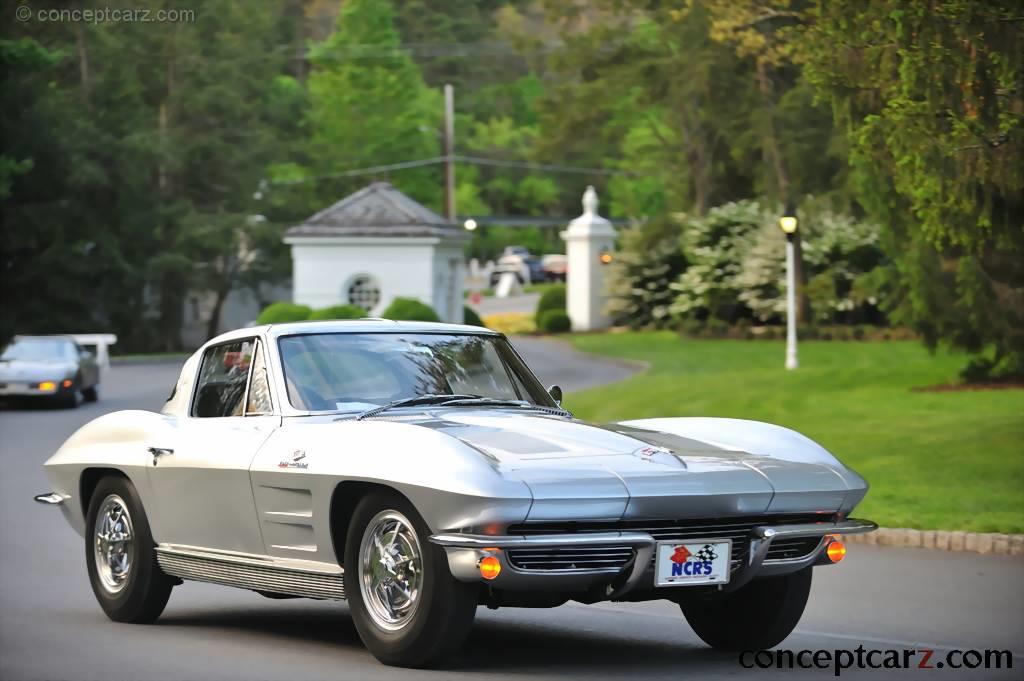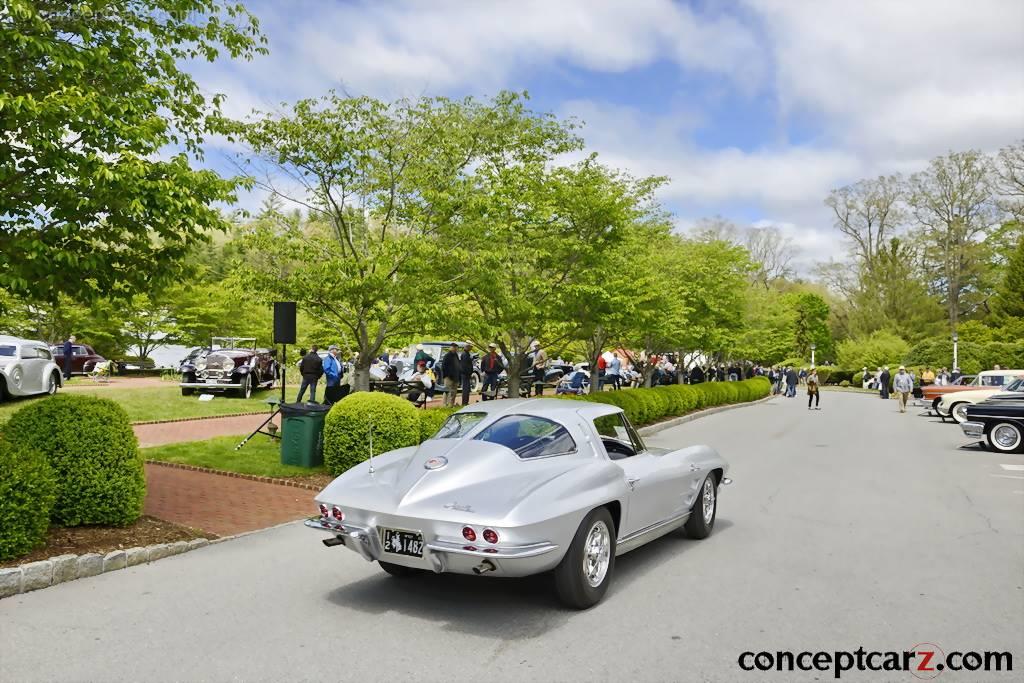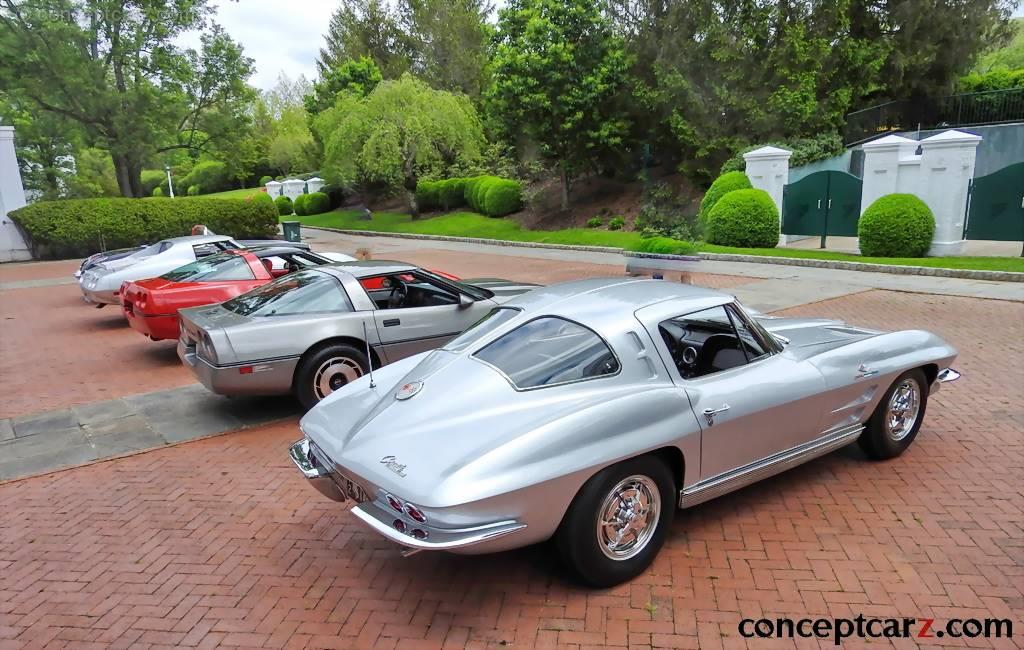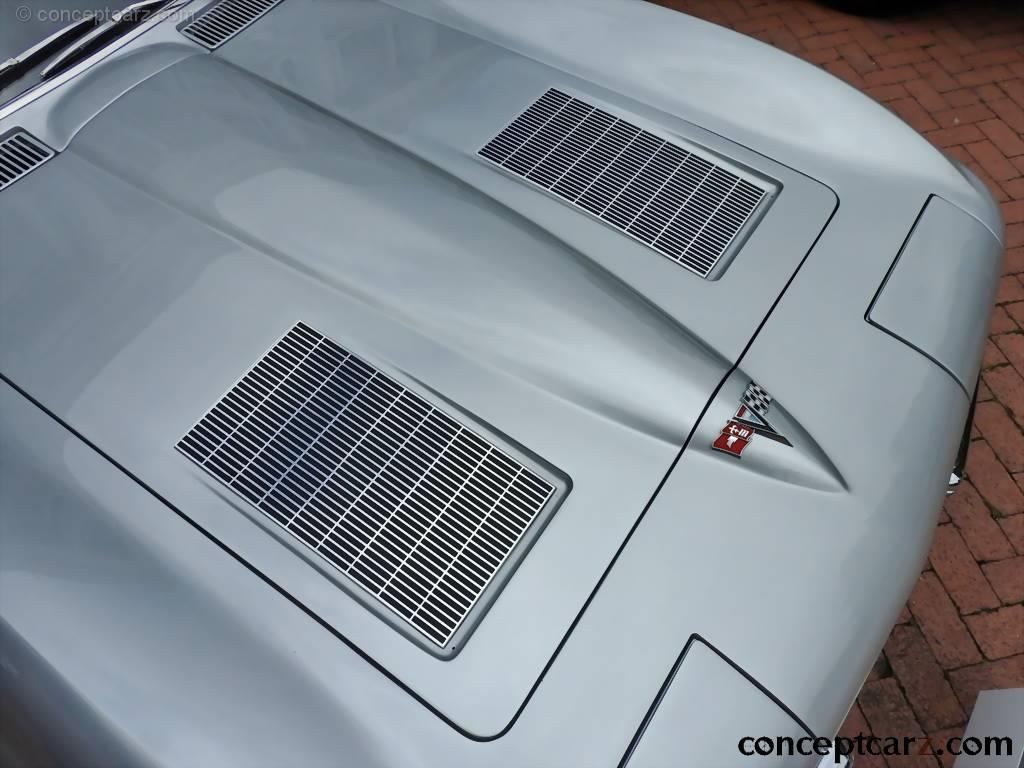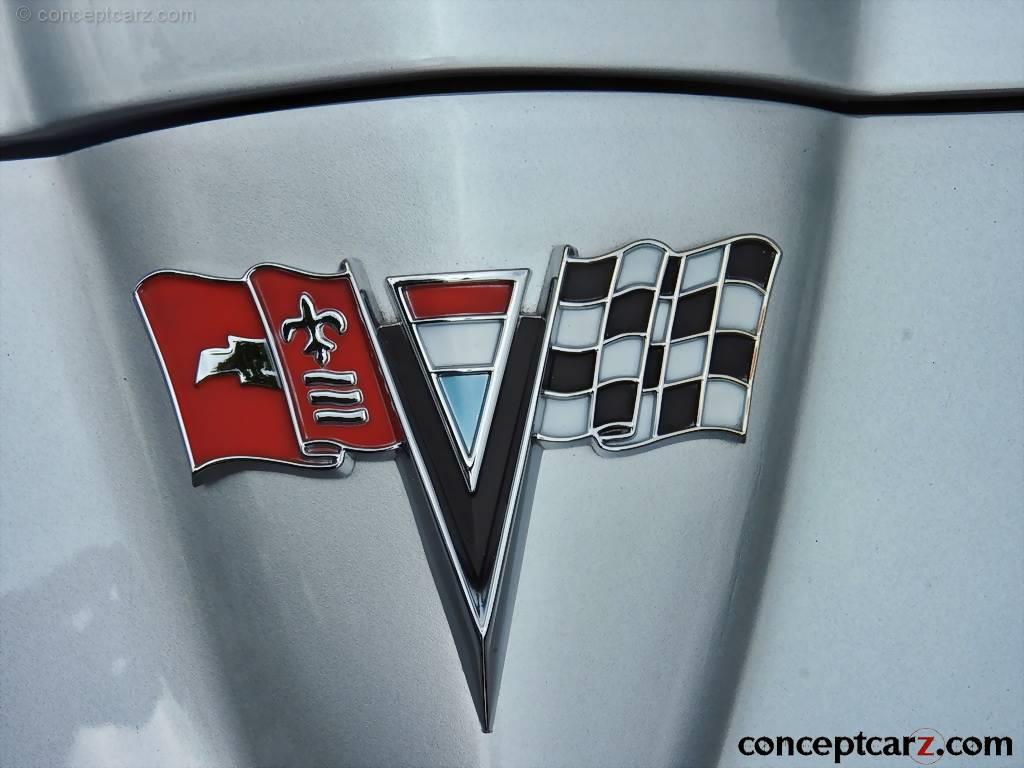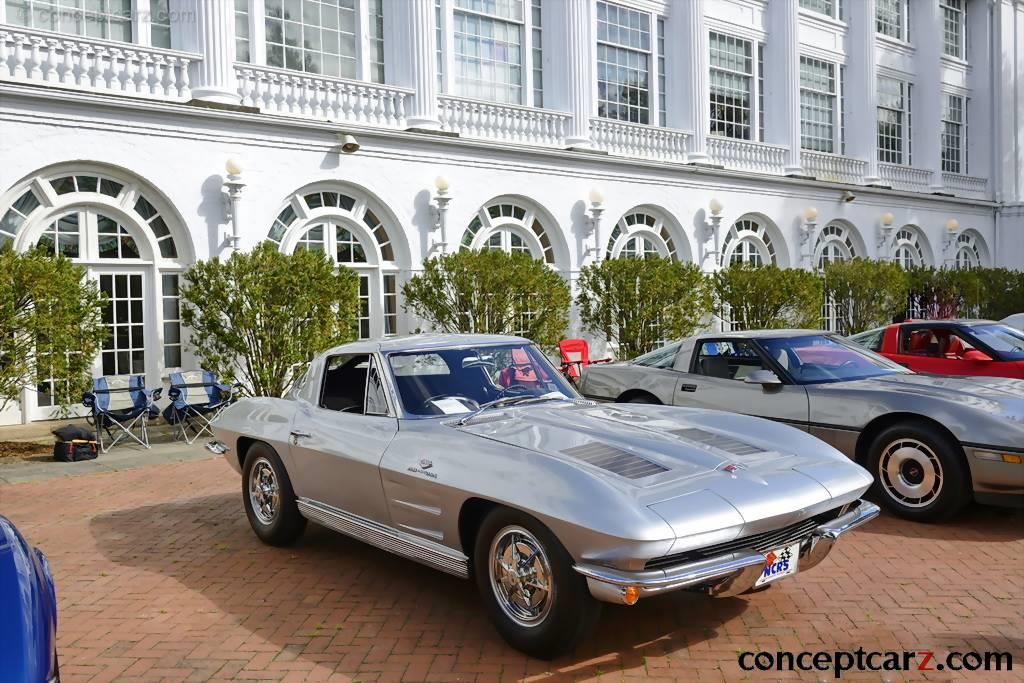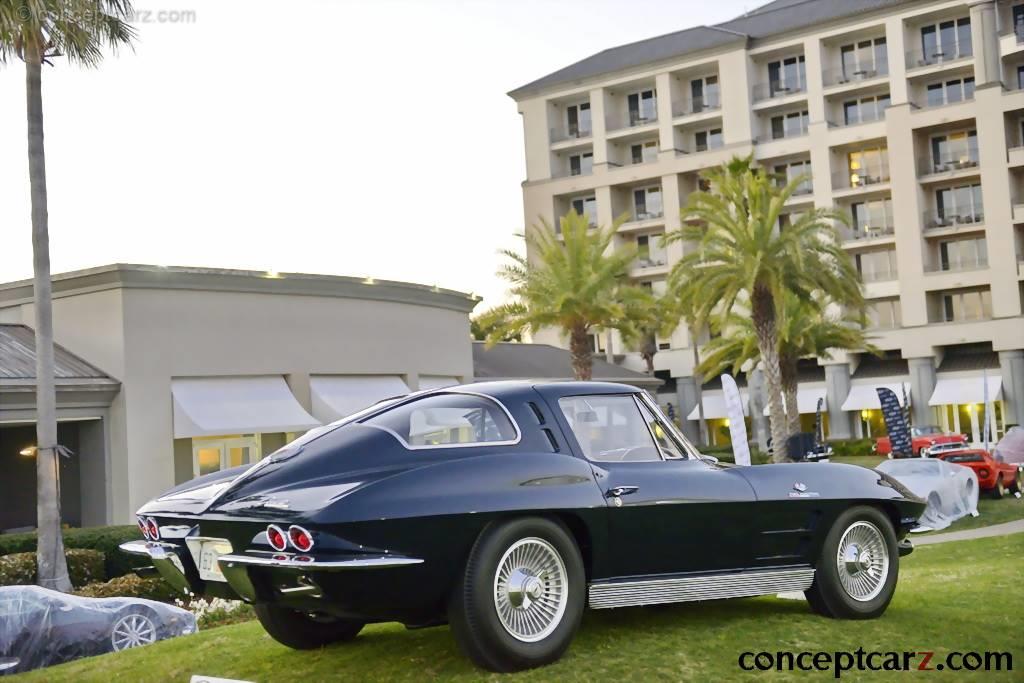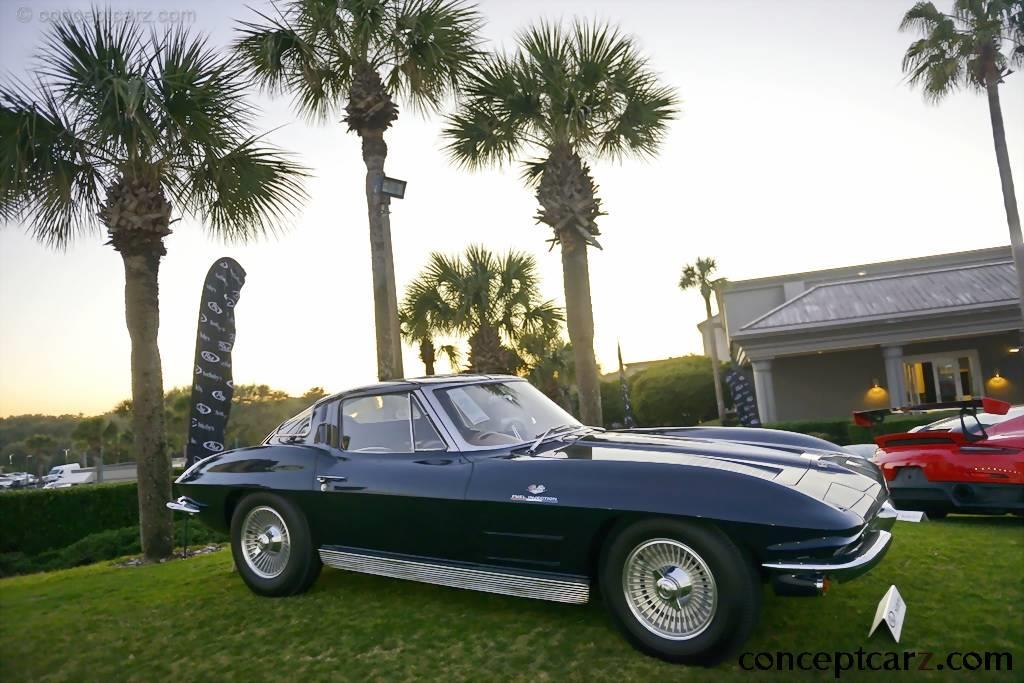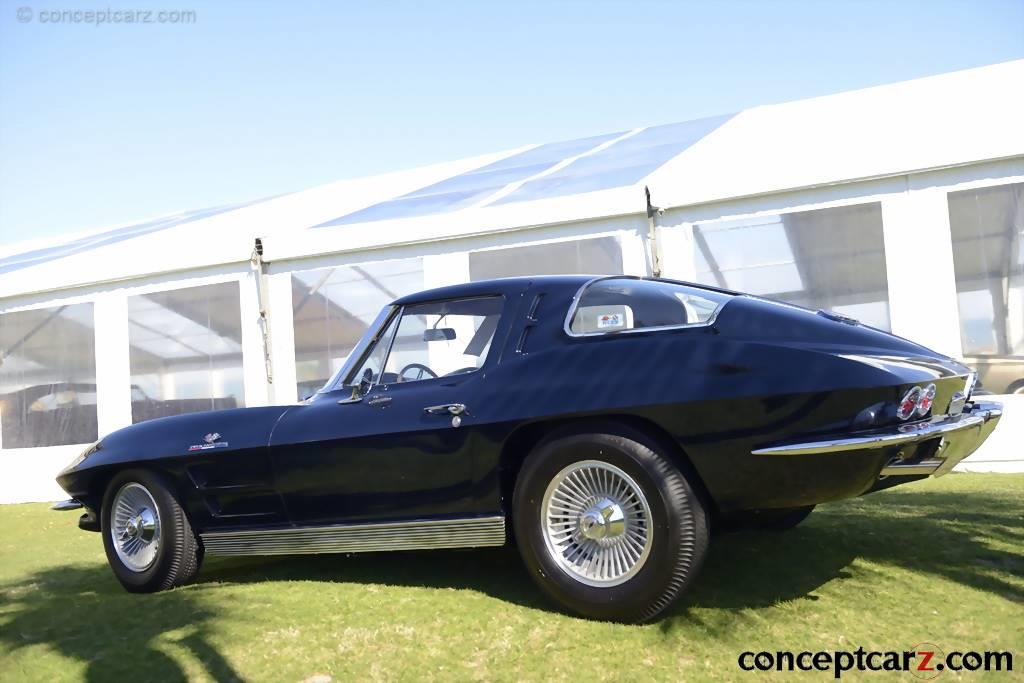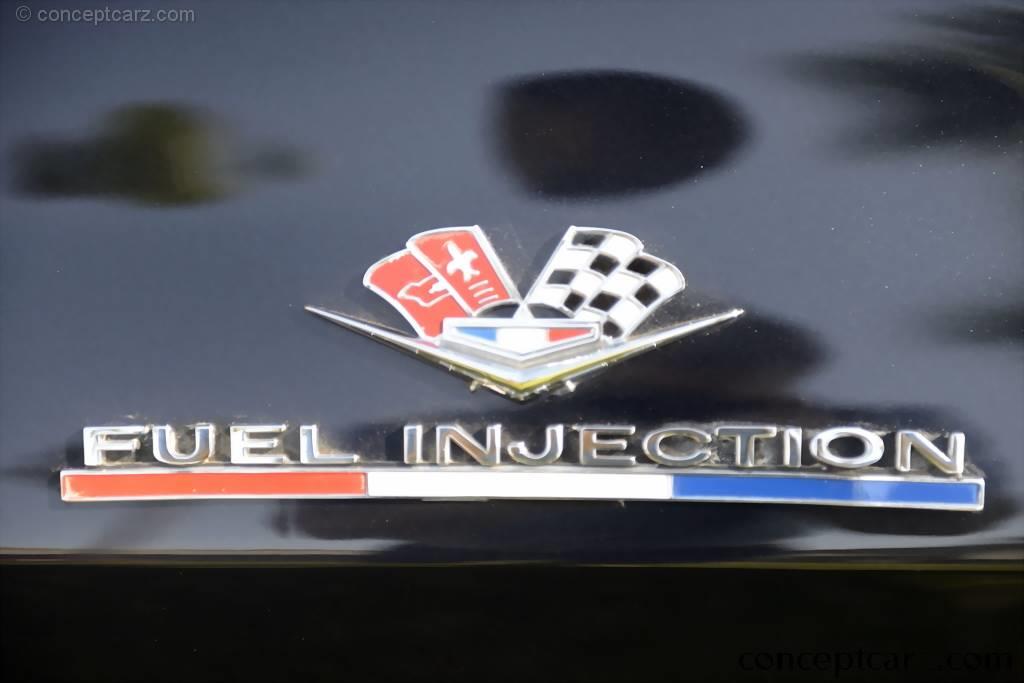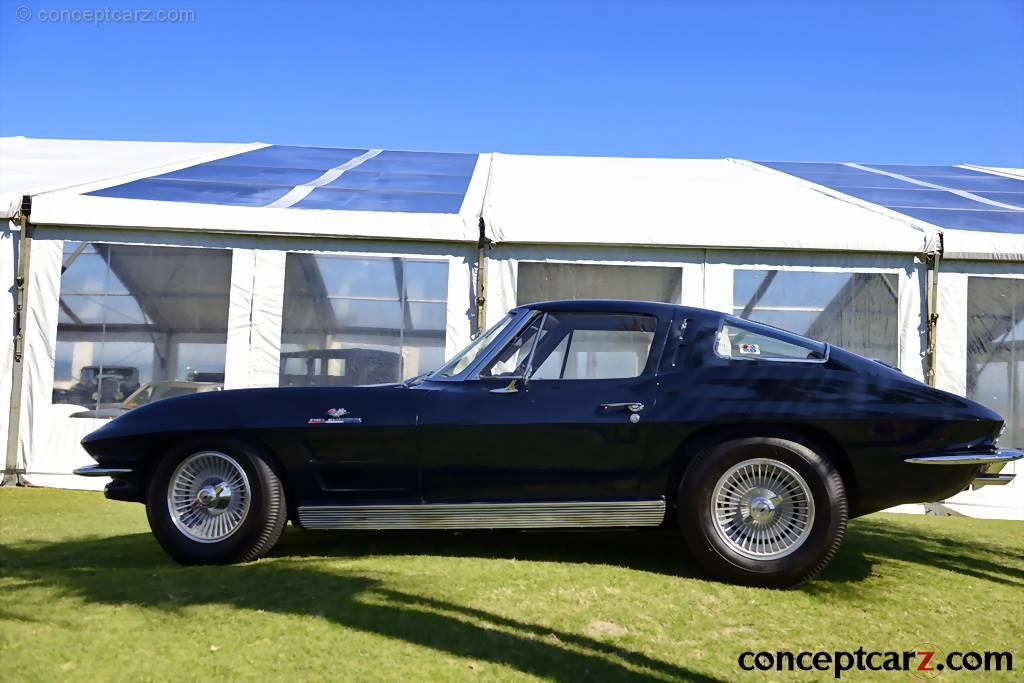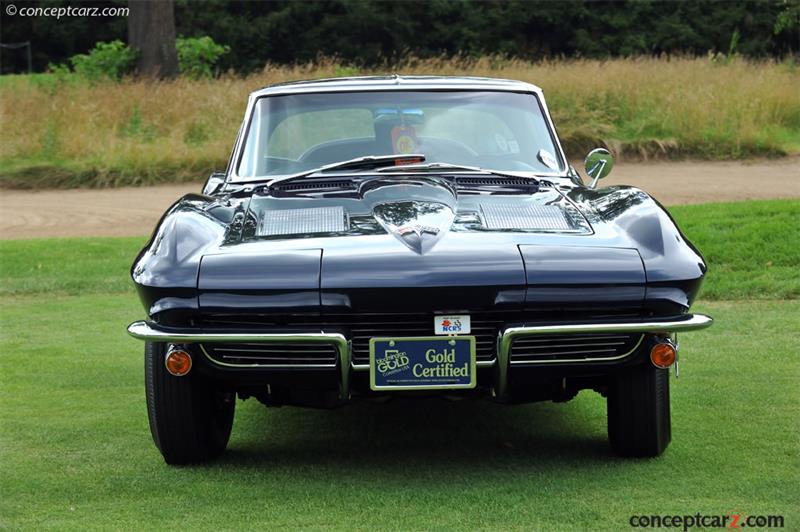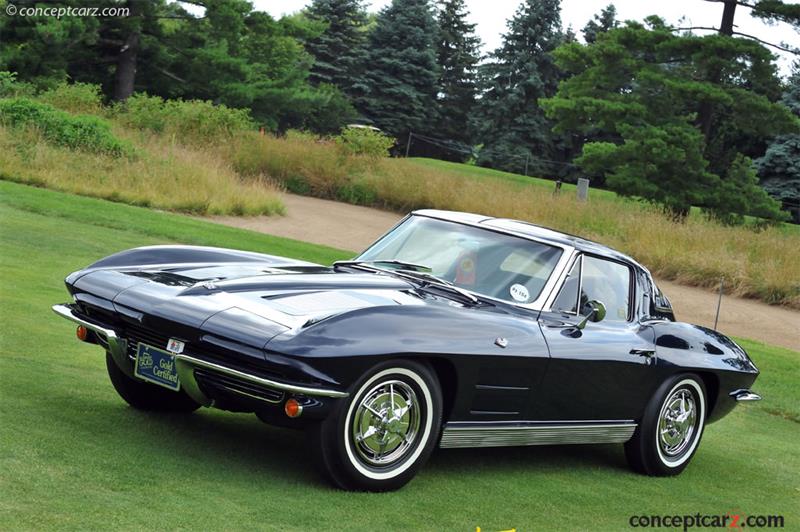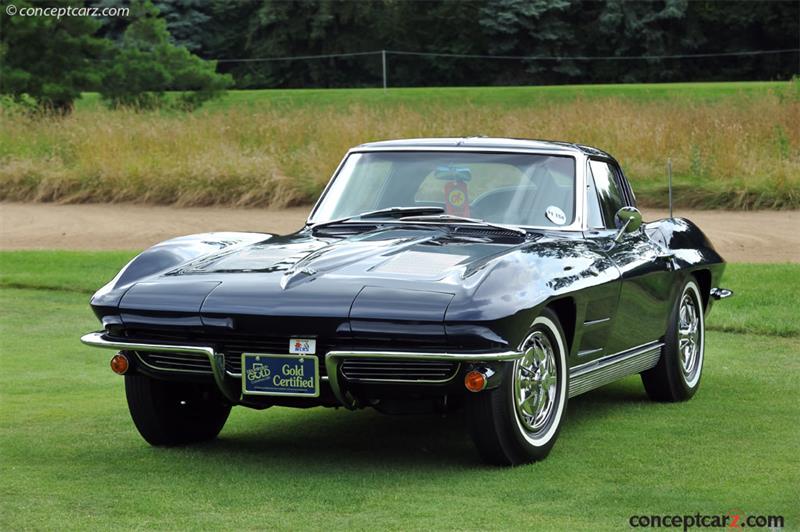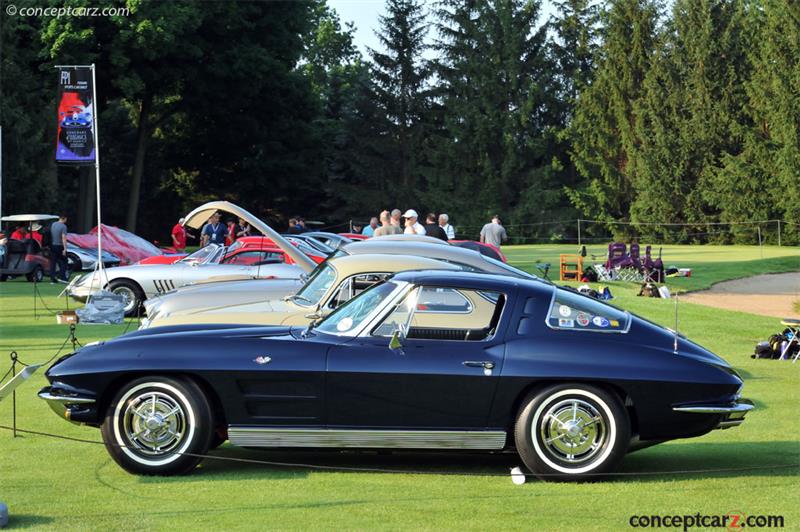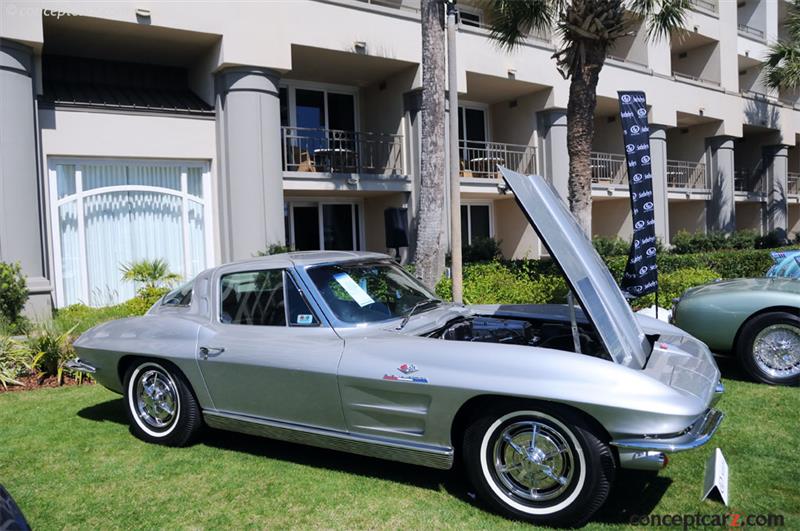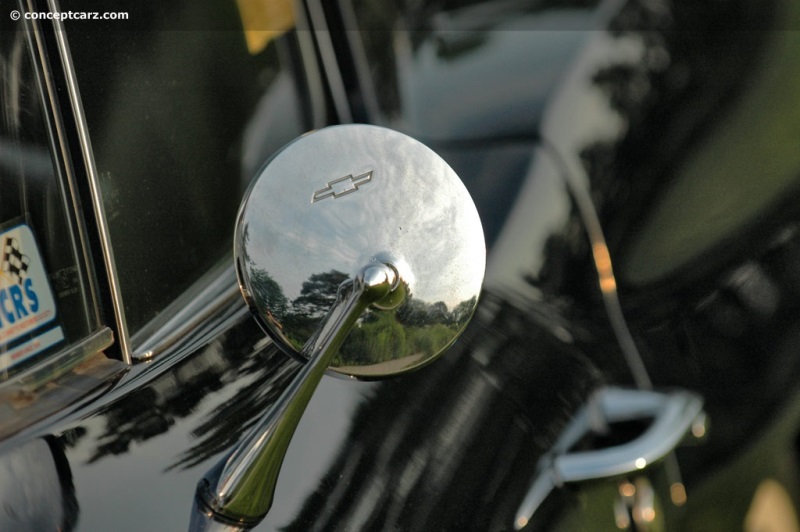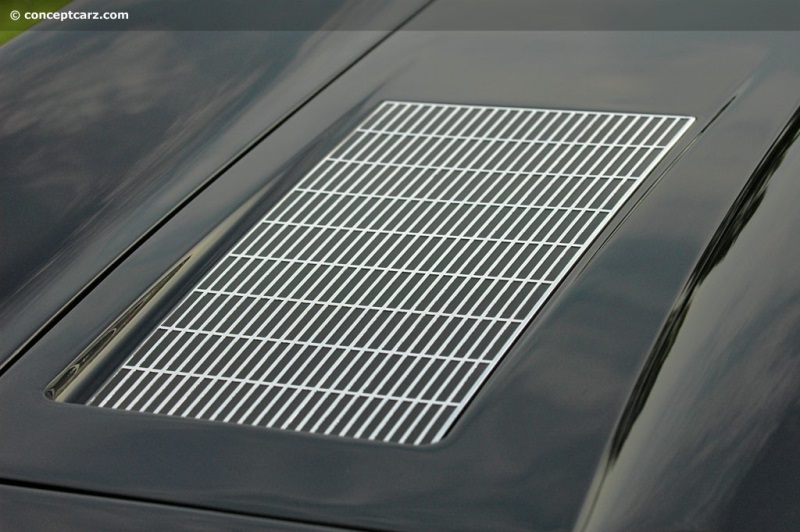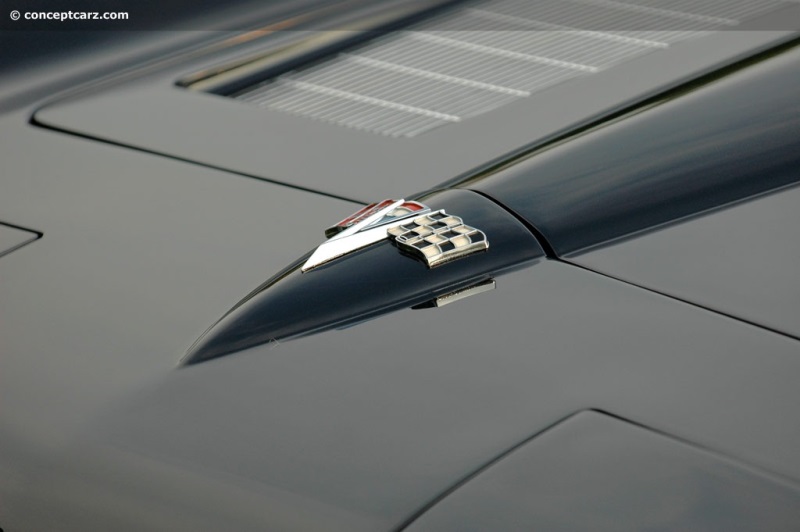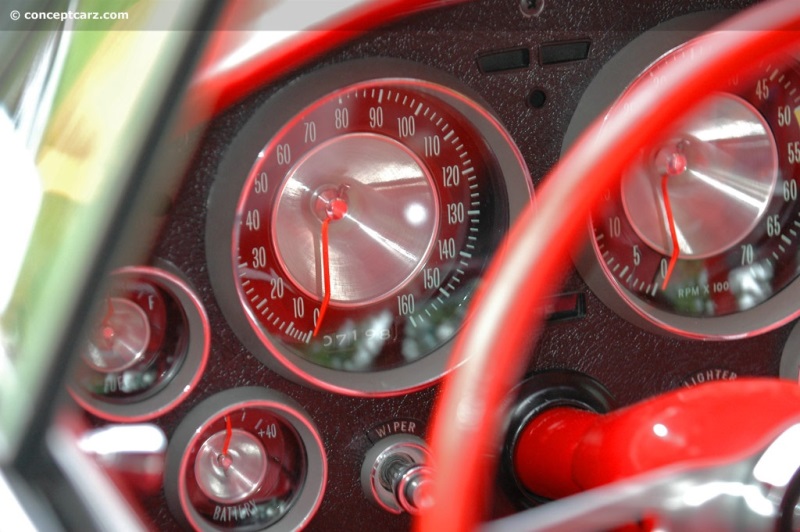In 1963, Corvette introduced its all-new Corvette Coupé and Convertible models called the Sting Rays. The car incorporated a boat-tail taper back end that was common for sporting roadsters of the 1930s. The back featured a Bugatti Atlantique and Bertone BAT-inspired split rear-window. This styling was replaced in 1964 with a single piece because of drivers complaining about visibility problems. The headlights were concealed in the front and would ‘pop’ out when in use.
The Larry Shinoda styling of the 1963 Corvette was inspired by a race car built by Bill Mitchell known as the ‘Mitchell Sting Ray.’ Mitchell was also inspired by a Mako Shart he had caught while deep-sea fishing. The final inspiration came from a concept design called the ‘Q Corvette,’ which was created by Chuck Pohlmann and Peter Brock under the styling direction of Bill Mitchell.
The new Corvette had an angular body, minimal brightwork, and the distinct split rear window on the coupe version. This was the first year that Corvette offered both a coupe and a convertible version. Nonfunctional vents were featured on both the sides and the hood and it was the only year for the split window. Several owners, who found the split window controversial, later removed the split and installed a one-piece, 1964 rear window.
New plants in St. Louis, Missouri, were opened to keep pace with the popularity of the vehicle.
The wheelbase was shortened by four inches to 98 inches. This, along with independent rear suspension, improved handling and maneuverability. The steering ratio decreased from 3.4 to 2.9 turns-to-lock. Hydraulically assisted power steering was also offered for the first time. The drum brakes were still used. The optional sintered metallic linings and finned aluminum brake drums were offered and allowed greater fade resistance and better cooling. The standard engine offered 250 horsepower, but the top fuel-injected model offered up to 360 horsepower.
The overhead-valve, 327 cubic-inch V8 with a Carter four-barrel carburetor and 10.5:1 compression produced 250 horsepower at 4,400 RPM and 350 lb-ft of torque at 2,800 RPM. It had hydraulic valve lifters and five main bearings. The L75 327 CID V8 option used a Carter four-barrel carburetor, 10.5:1 compression, and offered 300 horsepower at 5,000 RPM and 360 lb-ft of torque at 3200 RPM. The L76 option was also a 327 CID block with a Carter four-barrel carb, 11.25:1 compression, and 340 hp at 6,000 RPM and 344 lb-ft of torque at 4,000 RPM. The L84 Ram-Jet Rochester Fuel-Injected 327 CID brought output to 360 bhp at 6,000 RPM and torque to 352 lb-ft at 4,000 RPM. A three-speed manual all-synchromesh transmission with a floor-mounted gear shifter was standard. With the L84 option installed, the Corvette could sprint from zero-to-sixty mph in 5.9 seconds.
RPO L75 was priced at $53.80, the RPO L75 at $107.60, and the RPO L84 option was $430.40. ROPO M20 was the four-speed manual transmission with a price of $188.30, and RPO M35 was the Powerglide automatic at $199.10. RPO J50 were power brakes (43.05) and RPO J65 were Sintered metallic brakes (37.30). The RPO N03 option, only available on the coupe, added a 36-gallon fuel tank at a price of $202.30. An off-road exhaust system (RPO N11) was priced at $37.70. The RPO code Z06 was a ‘Special Performance Equipment’ package that added larger shocks and springs, a larger-diameter front sway bar, and heavy-duty finned drum brakes with sintered linings, a unique dual-circuit master cylinder, and the L84 engine. Just 199 buyers selected the Z06 option in 1963.
The list of exterior color options included Daytona Blue, tan, Red, Silver, White, Black, and Silver-Blue. 1963 was the first year since 1957 that a beige soft top was offered. Black or White soft tops were also available. The vinyl upholstery color options included red, dark blue, saddle tan (two saddle tan leather upholstery options were available), and black.
The base price for the coupe was $4,257.00, while the convertible listed for $4,037.00. During the 1963 model year, Chevrolet produced 10,594 coupes and 10,919 convertibles of the Corvette. Additionally, Chevrolet produced five Grand Sports in 1963 before GM canceled all its racing involvement. The Grand Sports tipped the scale at a mere 1,908 lbs and were powered by a small-block 377 CID Chevy V8 equipped with an aluminum cylinder block and aluminum Hemi-head cylinder heads. They used a port fuel injection system and twin ignition.
